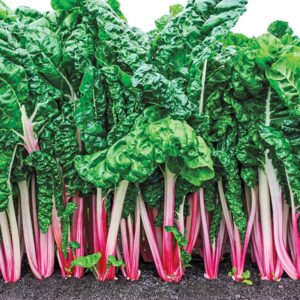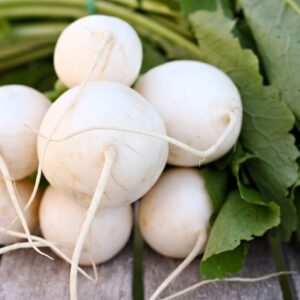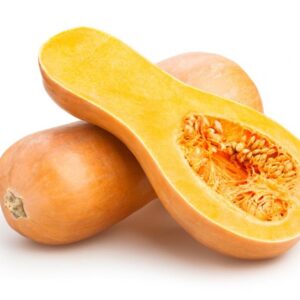HABANERO PEPPERS
Description
The Habanero pepper is a fiery chili variety renowned for its intense heat and fruity flavor. Originating from the Caribbean, particularly the Yucatan Peninsula, Habaneros are among the hottest peppers in the world, typically measuring between 100,000 to 350,000 Scoville Heat Units (SHU), though some varieties can surpass even higher levels of heat.
These small, lantern-shaped peppers start off green and mature to vibrant shades of orange, red, or yellow. They have a distinctively wrinkled appearance and thin flesh. Despite their extreme heat, Habanero peppers also boast a unique fruity flavor with hints of citrus, tropical fruits, and floral notes.
Habanero peppers are commonly used to add heat and flavor to a variety of dishes, including salsas, hot sauces, marinades, and spicy dishes from around the world. Their intense heat means that even a small amount can pack a powerful punch, so they are often used sparingly to add a kick to recipes.
In addition to their culinary uses, Habanero peppers are also valued for their health benefits. They contain capsaicin, a compound known for its anti-inflammatory and metabolism-boosting properties, as well as vitamins A and C.
Overall, the Habanero pepper is prized by chili enthusiasts and adventurous cooks alike for its fiery heat, bold flavor, and versatility in the kitchen. However, it should be handled with caution due to its intense spiciness.
Description
The Habanero pepper is a fiery chili variety renowned for its intense heat and fruity flavor. Originating from the Caribbean, particularly the Yucatan Peninsula, Habaneros are among the hottest peppers in the world, typically measuring between 100,000 to 350,000 Scoville Heat Units (SHU), though some varieties can surpass even higher levels of heat.
These small, lantern-shaped peppers start off green and mature to vibrant shades of orange, red, or yellow. They have a distinctively wrinkled appearance and thin flesh. Despite their extreme heat, Habanero peppers also boast a unique fruity flavor with hints of citrus, tropical fruits, and floral notes.
Habanero peppers are commonly used to add heat and flavor to a variety of dishes, including salsas, hot sauces, marinades, and spicy dishes from around the world. Their intense heat means that even a small amount can pack a powerful punch, so they are often used sparingly to add a kick to recipes.
In addition to their culinary uses, Habanero peppers are also valued for their health benefits. They contain capsaicin, a compound known for its anti-inflammatory and metabolism-boosting properties, as well as vitamins A and C.
Overall, the Habanero pepper is prized by chili enthusiasts and adventurous cooks alike for its fiery heat, bold flavor, and versatility in the kitchen. However, it should be handled with caution due to its intense spiciness.
Description
To plant Habanero peppers, follow these steps:
- Location: Choose a sunny location for planting Habanero peppers as they thrive in full sunlight. Ensure the soil is well-draining and rich in organic matter.
- Timing: Start Habanero pepper seeds indoors about 8-10 weeks before the last expected frost date in your area. This allows the seedlings to establish before transplanting them outdoors. Habanero peppers need warm soil and air temperatures to germinate and grow successfully.
- Soil Preparation: Prepare the soil by loosening it to a depth of about 8-12 inches (20-30 cm). Mix in compost or aged manure to improve soil fertility and structure. Aim for a slightly acidic to neutral soil pH, ideally between 6.0 and 7.0.
- Planting Seeds: Plant Habanero pepper seeds in seed trays or small pots filled with seed starting mix. Sow the seeds about 1/4 inch (0.6 cm) deep and lightly cover them with soil. Keep the soil consistently moist but not waterlogged.
- Germination: Place the seed trays in a warm location, ideally around 70-80°F (21-27°C), to facilitate germination. Keep the soil evenly moist during this period. Habanero pepper seeds typically germinate within 10-14 days.
- Transplanting: Once the seedlings have developed several sets of true leaves and all danger of frost has passed, transplant them into the garden. Space the plants about 18-24 inches (45-60 cm) apart in rows spaced 24-36 inches (60-90 cm) apart.
- Watering: Water the newly transplanted Habanero pepper plants thoroughly to help them establish in the garden. Afterward, water consistently, providing about 1-2 inches (2.5-5 cm) of water per week. Water at the base of the plants to avoid wetting the foliage, which can lead to disease.
- Fertilization: Fertilize Habanero pepper plants sparingly, as they do not require heavy feeding. Apply a balanced fertilizer or a fertilizer higher in phosphorus to promote flowering and fruiting. Follow the manufacturer’s instructions for application rates.
- Mulching: Apply a layer of organic mulch, such as straw or shredded leaves, around the base of the plants to help retain soil moisture, suppress weeds, and regulate soil temperature.
- Support: Depending on the size and growth habit of your Habanero pepper plants, you may need to provide support such as stakes or cages to prevent them from bending or breaking under the weight of the fruit.
- Harvesting: Habanero peppers typically mature 70-90 days after transplanting. Harvest the peppers when they reach their desired size and color, usually when they are firm and glossy. Use scissors or pruning shears to cut the peppers from the plant, leaving a small portion of the stem attached.
Following these planting instructions will help you grow healthy and productive Habanero peppers in your garden. Enjoy their fiery flavor in a variety of culinary dishes!





